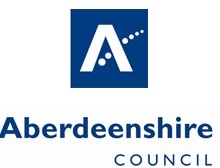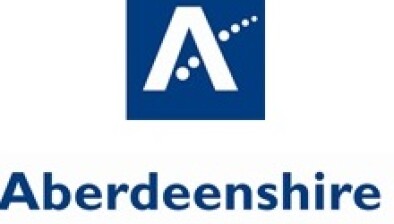Aberdeenshire Council sets £753m budget for coming year

Aberdeenshire Council budgets for the coming year have been set this month.
Councillors met and debated how much to spend on services as part of revenue budgets, the capital plan, the housing revenue account, and carbon commitments in the coming year.
Highlights include:
- Budget for the year set at £753 million
- Capital budget set at 8.5% of total income, or £96m for the coming year.
- Focus on delivering core and statutory services to the best of our financial ability to the highest possible standard.
- A sincere thank you from the elected members to the staff who deliver services every day.
- Councillors also thanked the public for their feedback as part of budget engagement and note where this feedback has influenced decision-making.
- Core Council Tax for the coming year frozen.
The 2024/25 budget is being set against a backdrop of economic uncertainty and significant financial challenges for the council and its residents.
The Medium-Term Financial Strategy (MTFS) plays a crucial role. It provides a plan for understanding available resources, assessing the costs of current services, and planning for the implementation of new services. By embracing this reality and proactively planning, we can effectively manage the tough operating environment and continue to serve our communities to the best of our ability. A balanced revenue budget for the year was agreed for the financial year 2024/25 at £753m.
Borrowing in the capital budget has been limited to no more than 8.5% of total income streams in any future year – resulting in a £96m capital budget. The plan has been reduced on its iterations in previous years, amidst universal agreement that it must be streamlined. Commitments were made in the chamber to the delivery of Peterhead Community Campus, commitments to delivering new Fraserburgh and Dunottar Primary schools but with new extended timescales which will be pushed back, and commitments made to bridges work at Banff and Aboyne in the coming years.
The opposition tabled an alternative budget, proposing to protect several of the savings. Through the speeches, they set out proposals based on ‘services not buildings’ and were keen to see money spent in areas which could benefit the delivery of front-line services as a priority.
Education was also a strong focus of their proposals. As was the focus on the most vulnerable and the speed of transformation.
Council Tax will be frozen for the coming year, following an announcement from the Scottish Government, and that freeze will be upheld locally. There is likely to be a rise in water charges as part of these bills via Scottish Water, so monthly payments may be higher. Council Tax bills will be delivered (either in paper or online) ahead of the new cycle with payments set out clearly. Band D core council tax will remain at £1,393.42.
It resulted in a vote, in which the administration revenue budget was agreed at a vote of 38 for the motion (which was the administrations budget, 23 for the amendment which was the opposition proposals and 2 no votes.
The agreed budget as well as the opposition proposals can be found here.
Councillors went on to approve the authority’s Housing Revenue Account budget. This is the account which supports the housing portfolio and is ringfenced from the standard revenue budget.
This includes £22.9m for the maintenance of more than 13,200 properties, along with £50.3m for housing improvements over the coming year.
Council house rents are due to rise by 5%, working out at an average of an extra £4.46 per week, taking the average weekly rent from £88.00 to £92.46. The decision was based on a recommendation from the council’s Communities Committee, which earlier this year supported the findings of a working group involving tenants which had explored potential rises of between 3% and 7.5%.
Target levels that services will have to hit in terms of carbon reduction have also been agreed.
The carbon commitments of the council sit as one the strategic priorities in the Council Plan. The carbon budget shows how the council is playing its part in carbon reduction, leading by example. Members agreed to focus on the carbon programme, which includes work on LED streetlamps, EV infrastructure, planning for future fleet, building emissions and biodiversity. The range of examples are just some of what services are doing to reduce their emissions.
Councillors recognised the issues being faced by services in delivering their targets but provided support for teams to lead by example.
Council leader Councillor Gillian Owen said: “We are a large and complex organisation that delivers a range of services from cradle to grave. Next year, we will spend £753m on those services – including care, education, roads, waste, leisure, social work, burials, streetlights, and car parks. Aberdeenshire Council provides civic leadership, support to communities and help to those who need it most. Our communities deserve the best local services to help them to thrive and prosper, they must have a voice in decisions that will impact on them and be resilient, so they feel able to do more for themselves.
“To meet current challenges, officers have looked at the core minimum viable service we can offer, what’s statutory, ring-fenced or grant funded. We’ve also had to look at our offering to see if we’re heavily subsidising services that we can no longer afford and that the private sector can support on a commercial basis. At the core is how can we deliver the same service in a different way – that means rationalising our assets in order to protect the core service.”
Councillor Anne Stirling is the deputy leader. She said, in the meeting: “It is undeniable that we are facing significant funding challenges. However, it is also true that our grants and allocated budgets simply cannot and are not keeping pace with growing needs, rising costs and increased expectations to maintain and increase the existing levels of service delivery. Our role today is to set a direction that is measured and proportionate and focuses on the money that we do have and how we can use it best to deliver for our communities.”







